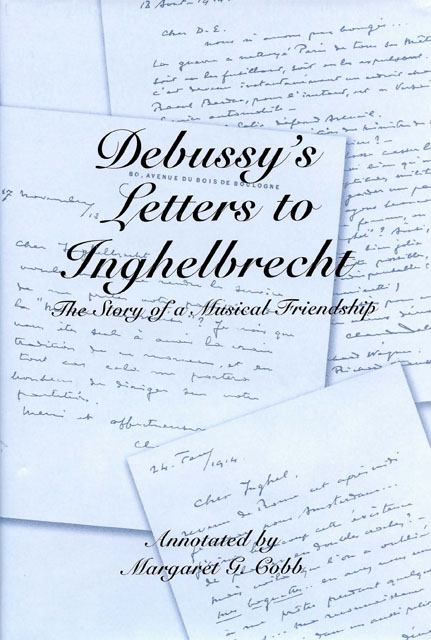Book contents
- Frontmatter
- Dedication
- Contents
- List of Letters
- List of Illustrations
- Preface
- Acknowledgments
- D. E. Inghelbrecht: A Biography
- Letters from Debussy to Inghelbrecht
- Appendix A Letter from Inghelbrecht to Debussy
- Appendix B Letters from Inghelbrecht to d’Annunzio
- Appendix C Letters from Chouchou Debussy to Inghelbrecht
- Biographies
- Bibliography
- Discography
- Index
- Eastman Studies in Music
- Debussy’s Letters to Inghelbrecht: The Story of a Musical Friendship
D. E. Inghelbrecht: A Biography
Published online by Cambridge University Press: 18 March 2023
- Frontmatter
- Dedication
- Contents
- List of Letters
- List of Illustrations
- Preface
- Acknowledgments
- D. E. Inghelbrecht: A Biography
- Letters from Debussy to Inghelbrecht
- Appendix A Letter from Inghelbrecht to Debussy
- Appendix B Letters from Inghelbrecht to d’Annunzio
- Appendix C Letters from Chouchou Debussy to Inghelbrecht
- Biographies
- Bibliography
- Discography
- Index
- Eastman Studies in Music
- Debussy’s Letters to Inghelbrecht: The Story of a Musical Friendship
Summary
Here is Inghelbrecht: will of iron in a fragile body, leader feared by his soldiers, noble servant of his masters, adored by Debussy.
Désiré Emile Inghelbrecht was born in Paris on 17 September 1880 and died there on 14 February 1965. His father was a viola player with the Paris Opéra. His mother, a piano teacher, gave him his first piano lessons at the age of four, when he had already started to play the violin. His parents soon discovered that he had perfect pitch.
When he was seven, he entered the Conservatoire, where he studied solfège and harmony and also audited a violin class. At the age of sixteen, he was expelled, allegedly because of “musical incompetence.” In fact, the real reason was that he was caught playing the violin in local cafés—a violation of the rules of the Conservatoire.
In 1896, Inghel, as he was known to his friends, was appointed second violinist at the Concerts de l’Opéra. There he was exposed to a large repertory, which would serve him well later on. At this time, his friend Pierre Monteux, then conductor of the Concerts Berlioz, occasionally asked Inghelbrecht to replace him, the pianist, the violinist, or the timpanist in his orchestra—all useful experiences. He already had dreams of being a conductor.
In 1902, Inghelbrecht first heard a work by Debussy. It was Pelléas et Mélisande, a work that was to leave a lasting impression on him. He was to conduct it throughout his life.
About 1905, he moved into a studio at 73 rue Caulaincourt. Colette Steinlen, the daughter of the artist Théophile Steinlen, lived in that same building with her father. She and Inghelbrecht soon met. They were married in 1910 and lived in the family apartment with her father, to whom Inghel became very much attached. Their marriage ended in a divorce in 1920.
In 1906, Inghelbrecht's first collaboration with Gabriel Astruc took place when he was asked to conduct the first and gala performance of the opera Le Clown, written by Astruc's friend Isaac de Camondo. It was a special evening, with Albert Carré, Jusseaume, and Geraldine Farrar participating. Le Tout-Paris was in the enthusiastic audience at the Théâtre Nouveau.
In 1908, we next hear of Inghelbrecht when he was asked by his friend Florent Schmitt to conduct the first performance of his ballet La Tragédie de Salomé at the Théâtre des Arts.
- Type
- Chapter
- Information
- Debussy's Letters to InghelbrechtThe Story of a Musical Friendship, pp. 1 - 8Publisher: Boydell & BrewerPrint publication year: 2005



